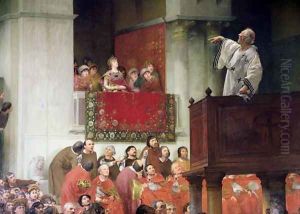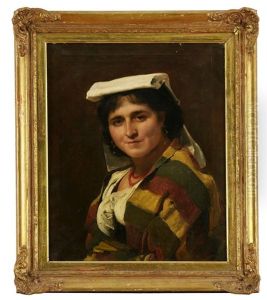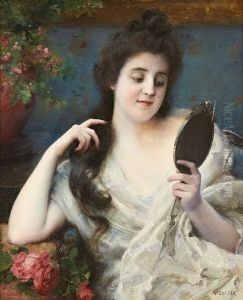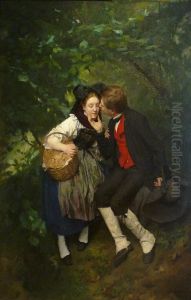Joseph Wencker Paintings
Joseph Wencker was a French painter born on January 23, 1848, in Strasbourg, France. He is often associated with the academic art movement of the late 19th century, a style characterized by its adherence to classical standards of beauty, high finish, and historical subject matter. Wencker studied at the École des Beaux-Arts in Paris under the tutelage of influential academic painters such as Alexandre Cabanel, a leading figure of the time known for his classical and mythological scenes.
Wencker became a respected artist in his own right, known for his historical paintings, genre scenes, and portraits. His work demonstrated a keen attention to detail and a strong command of technique, attributes that were highly prized in the academic circles of the period. He participated in the Paris Salon, an official art exhibition of the Académie des Beaux-Arts in Paris, which was the most important annual and biennial art event in the Western world at the time. Wencker received a third-class medal at the Salon in 1873 and went on to win a second-class medal in 1879, solidifying his reputation as a skilled painter.
In addition to his Salon success, Wencker was also awarded the prestigious Prix de Rome in 1875 for his painting 'Death of Vitellius,' which allowed him to study at the Villa Medici in Rome, an opportunity that provided him with further exposure to classical art and the Italian masters. His time in Italy had a significant influence on his artistic development and subject matter.
Upon his return to France, Wencker continued to exhibit at the Salon and to receive accolades for his work. He also became a teacher, sharing his academic techniques and principles with the next generation of artists. Joseph Wencker's legacy is that of a consummate academic artist who upheld the values of classical art during a time when the art world was beginning to shift towards modernism. He passed away on December 18, 1919, in Paris, leaving behind a body of work that reflected the academic traditions of his era.



